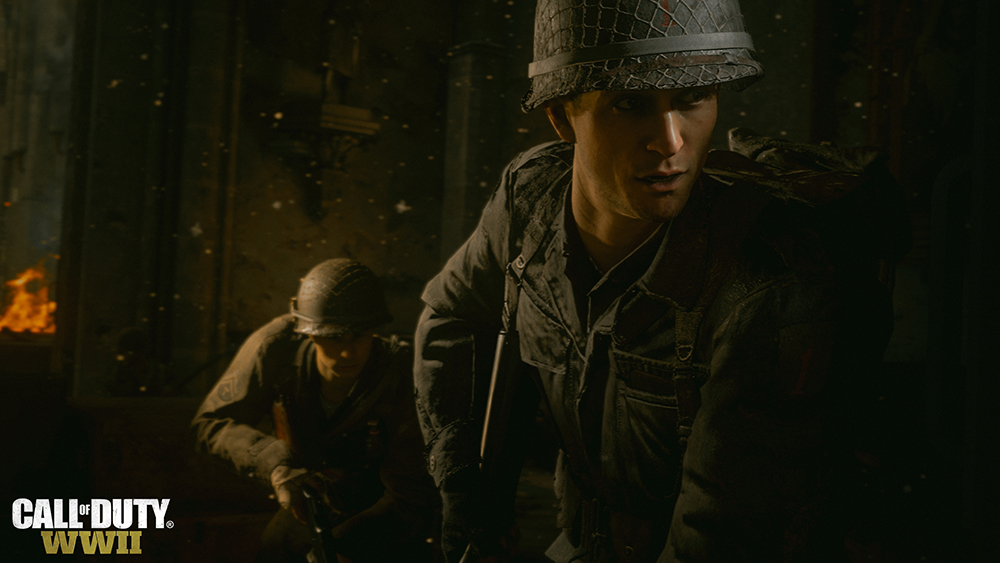No lasers. No space ships. No jump boots or exoskeletons. No endless sprinting.
Just me and my dudes, running across a battlefield, getting shot at and shooting back. We die, respawn, press forward, respawn again. Hopefully, and in this case eventually, we win. Then we start it all over again, for hours at a time.
This is what I remember of late Thursday nights playing Call of Duty during the heyday of the Xbox 360. Based on a lengthy E3 demo, this is also what we’re getting with Call of Duty WWII later this year.
Activision’s latest edition in the mega FPS series takes us back to the roots of Call of Duty, almost to a fault. And yet, it manages to capitalize on some of the best aspects of the series. This was apparent in my time with WWII at E3 last week. In a private demo session we went hands-on with several of the game’s multiplayer modes, including classic Domination and Death Match types. These fit the MO for an FPS. Go in and shoot, beat up the other team, win. It’s not groundbreaking. Over the years these modes have been refined and tweaked to infinity, and you essentially know what you’re going to get.
However, it was the new War mode that stuck out as something fresh.
Instead of one-off battles, War strings together missions into mini plots, creating a co-op narrative for both sides of the combat. In our demo we were tasked first with heading up hill to capture a base, then to build a bridge, and finally to escort a tank into the enemy encampment to destroy a weapons cache, all with short cutscenes between the missions. It’s a series of small battles that add up into something weightier, and made the typical online skirmish feel like there was importance added to my actions. I wasn’t just going to run and gun, I was a part of a team and had to work efficiently, even without communicating with voice (the room we were in was fairly quiet). I haven’t felt that in a Call of Duty game in a long time. Though we won all three missions, I genuinely wondered what the other side was experiencing as they “lost.”
There isn’t a lot of scaling of buildings or verticality, so the “boots on the ground” description is apt. We just keep moving forward, into and out of buildings and trenches, behind cover in streets. The variety of guns and weapons is good, and the loadouts ask us to spread our offense instead of spamming grenades. CoD is not about precision shooting, and WWII follows that philosophy. I didn’t feel like I had to be perfect with my shots, as they’d do enough damage near my targeted area rather than directly on it. The visuals themselves weren’t leaving me with a sense of awe, either. Yes it’s multiplayer, and yes the game still has months before completion, but the design and art direction felt like something ripped directly out of the last generation of games rather than pushing today’s hardware.

Even though it’s made up of traditional CoD parts, the sum itself is more than that. The new classes and loadouts are fresh (I chose a female soldier for my tenure), the sound effects are more than just booms (their spacial positioning on the battlefield helped me determine where gunfire was coming from and about how far away it was), and the new scoring streaks provided added incentives. While it doesn’t drastically alter the series, it’s enough of an improvement (at least from the multiplayer side) that it could be the best of what traditional Call of Duty is.
In a weird way, this is the Call of Duty I thought we would eventually get with a next generation version — if all we had to go on was 2011’s games.



No Comments